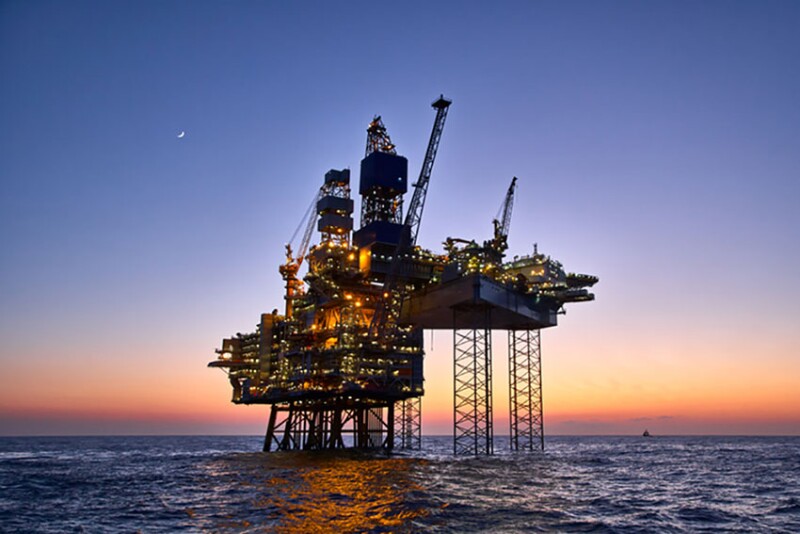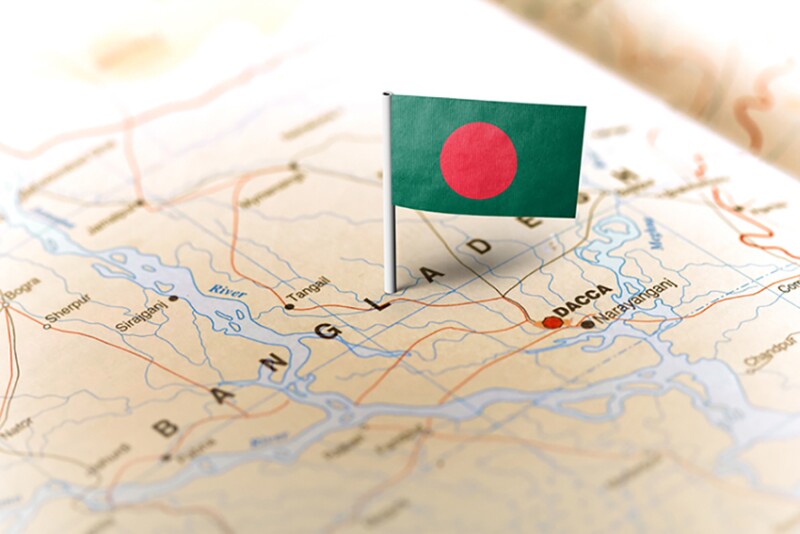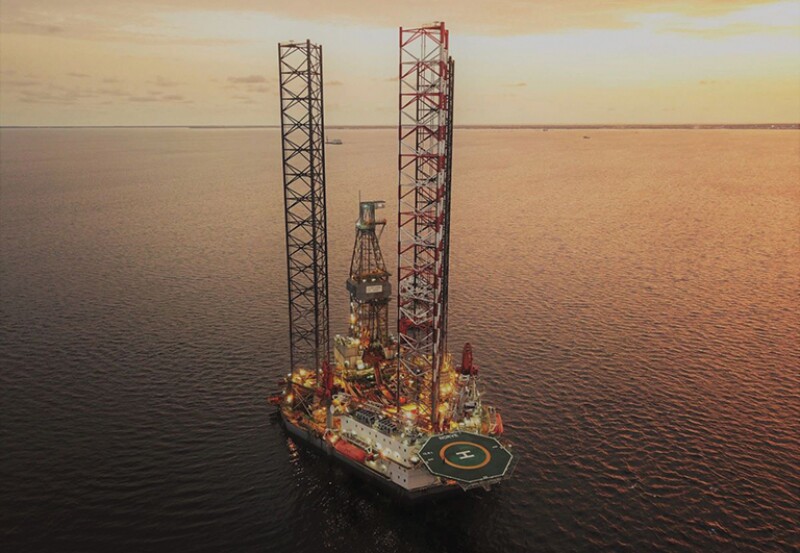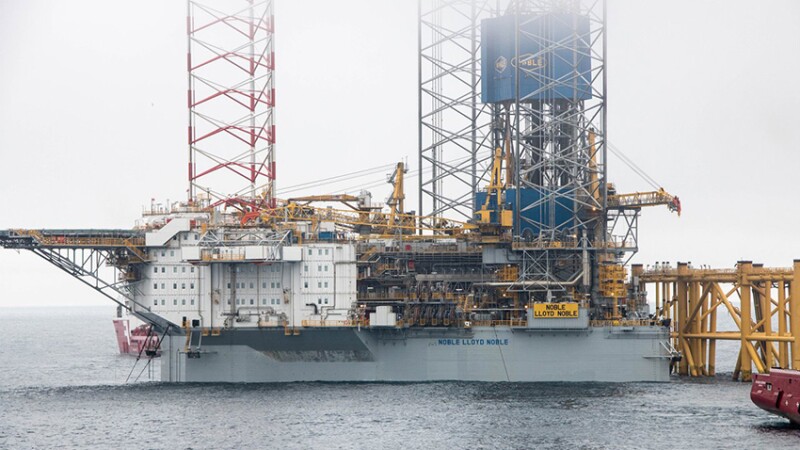Mediterranean Discovery Leads to New Partnerships
The Israeli government awarded 12 offshore licenses to six companies to explore for natural gas off the country’s Mediterranean coast after large gas deposits have been discovered in the East Mediterranean over the past decade and a half.
Six of the licenses were awarded to Eni, Dana Petroleum, and Israel’s Ratio Energies to explore an area west of the Leviathan field. The remaining six were granted to BP, Azerbaijan’s national oil company SOCAR, and Israel’s NewMed Energy to explore north of the Leviathan. The licenses will last for an initial 3 years, with the option to extend to up to 7 years, depending on progress.
NSTA Awards Big in North Sea
The North Sea Transition Authority (NSTA), Britain’s oil and gas regulator, awarded 27 new hydrocarbon exploration licenses, the first of its kind since 2019. Seventy-six companies applied for licenses, located in the central and northern North Sea and west of Shetland during this round, with successful bidders including Shell, Equinor, DNO, Aker BP, Ithaca, TotalEnergies, and BP. NSTA analysis estimated the average time between discovery and first production is close to 5 years and falling.
From this round, DNO North Sea Ltd. and Aker BP announced a partnership for Blocks 9/9f, 9/10c, 9/14c, and 9/15d, located along the Norwegian border and west of the Aker BP-operated Alvheim hub on the Norwegian Continental Shelf. DNO North Sea Ltd. is the operator holding a 50% interest, with Aker BP holding the remaining 50%.

TGS Technology Makes Strides in Offshore Bangladesh
Global energy data and intelligence provider TGS announced a new regional multiclient 2D seismic program offshore Bangladesh in partnership with SLB and Petrobangla. According to the company, the program’s initial phase will comprise approximately 11,000-line km of newly acquired high-resolution broadband 2D seismic data on a regional scale to enhance the geological understanding of the prospective Bengal Fan. Nearly 32,000-line km of multiclient seismic data covering offshore Bangladesh is anticipated to be covered throughout the program.
The acquisition began in early January 2023, with final processing deliverables anticipated in Q1 2024.

CNOOC Begins Production on Two Projects
CNOOC Ltd. has started production on two projects—Enping 18-6 and Penglai 19-3.
Enping 18-6, located in the Pearl River Mouth Basin of the South China Sea, has an average water depth of 99 m. The project’s main production facilities include one wellhead platform, with 15 development wells planned to be put into production. It is expected to achieve a peak production of approximately 9,300 B/D in 2024. CNOOC Ltd. holds 100% interest and is the operator.
Penglai 19-3, located in the south-central Bohai Sea, has an average water depth of approximately 30 m. The main production facilities include two wellhead platforms, and 130 development wells are planned to be commissioned, including 87 production wells and 43 water-injection wells. It is expected to achieve a peak production of approximately 29,800 B/D in 2027. CNOOC Ltd. holds 51% interest and acts as the operator, while ConocoPhillips China holds the remaining 49% interest.
Petronas Teams Up in Malaysia
Petronas signed a late-life asset (LLA) production-sharing contract with Ping Petroleum Sdn. Bhd. for the Abu Cluster offshore Peninsular Malaysia. The Abu Cluster comprises three developed fields: Abu, Abu Kecil, and Abu SW Upthrown, and remaining reserves of 5 million stock-tank bbl.
“With this award, Petronas is looking forward with Ping Petroleum to maximize the recovery from the Abu field, which registered a peak production of 15,000 B/D in 2008. Furthermore, with the implementation of enhanced commercial terms for LLA streamlined operational procedures, we are empowering the operator to apply their capabilities to monetize the Abu Kecil and Abu SW Upthrown fields,” said Senior Vice President of Malaysia Petroleum Management Mohamed Firouz Asnan.
BW Energy Plans for Production
BW Energy’s DHBSM-1 appraisal well has encountered commercial volumes of oil in the Hibiscus South satellite prospect leading the company to announce its plan to return to the well to complete it as a production well in early 2024. The well was drilled from the MaBoMo production platform to a total depth of 6002 m. The target area is located approximately 5 km southwest of the MaBoMo and was drilled by the Borr Norve jackup rig. Evaluation of logging data, sample examination, and formation pressure measurements confirm approximately 20 m of pay in an overall hydrocarbon column of 26.5 m in the Gamba formation, according to the company.
Preliminary evaluation indicates gross recoverable reserves of 6 to 7 million bbl of oil and approximately 16 million bbl of oil in place, in line with the mid-case pre-drill expectations reported prior to the beginning of drilling operations.

Chevron’s Myanmar Departure Hits a Snag
Two years after the company announced it will leave Myanmar in protest of violence and human rights abuses, Chevron is struggling to offload its assets there, including a portion of an offshore gas field in a venture with the state energy company. The departure announcement came in January 2022 as the country has been in crisis since the army overthrew the elected government in 2021.
In February 2023 the company said it had agreed to sell its assets, including a 41.1% stake in Myanmar’s Yadana gas field, to Canada’s MTI Energy for an undisclosed price.
The Yadana field, located in the Gulf of Martaban, has produced around 6 billion m3 per year of gas, about 30% of which has been supplied to Myanmar’s Myanma Oil and Gas Enterprise for domestic use and 70% exported to Thailand.
Petronas Strikes Big in Suriname
Petronas Suriname E&P announced the discovery of several oil-bearing layers in an exploration well off the coast of Suriname in areas adjacent to Guyana. The Roystonea-1 well, located in Suriname’s Block 52 in a water depth of 904 m, was successfully drilled to a total depth of 5315 m. In 2020, Petronas and ExxonMobil’s well, Sloanea-1, made a discovery in the same block.
Covering an area of 4,749 km2, Block 52 is located within the prospective Suriname-Guyana basin, approximately 75 miles offshore north of Suriname’s capital city, Paramaribo, with water depths ranging from 50 to 1100 m.
Petronas Suriname E&P is the operator with a 50% stake while ExxonMobil E&P Suriname holds the remaining 50% interest.
BP Starts Production in North Sea
BP started up production in the Seagull oil field, located in Block 22/29C of production license P1622, in the UK North Sea. According to the company, Seagull has been developed by Neptune Energy as a subsea tieback to the BP-operated central processing facility of the Eastern Trough Area Project in the central North Sea, around 140 miles east of Aberdeen. The new field is expected to produce around 50,000 BOEPD at peak production.
Neptune Energy holds a 35% stake in Seagull and operated the field through the development phase, drilling wells, and installing subsea equipment, with BP holding (50%) and operating the production phase of the development. JAPEX holds the remaining 15%.
Small, but Mighty, Discovery by Equinor in North Sea
Gas production is expected to start as early as Q4 2023 in the Gina Krog field in the North Sea thanks to a recent discovery by Equinor. Drilled by the Noble Lloyd Noble rig, the find is a partnership between Equinor acting as the operator (58.7%), KUFPEC Norway AS (30%), and PGNiG Upstream Norway AS (11.3%). The recoverable volumes are estimated to be between 5 million to 16 million BOE.
This is the first commercial discovery in the Gina Krog license since 2011.



